The “Paramedic ants” of sub-Saharan Africa (Megaponera analis)
The “Paramedic ants” of sub-Saharan Africa (Megaponera analis) are currently being investigated in a multidisciplinary project at the University of Lausanne.
A Photoblog contribution compiled by Erik T. Frank
For the past five years, I have been studying the behaviour of the termite hunting ant species M. analis in the Comoé National Park (Ivory Coast). This was made particularly easy thanks to the great research station built in the park by Prof. Linsenmair (some quick advertisement here: if anybody is interested to conduct research at the research station, follow this link and contact Prof. Linsenmair, it’s worth it!).

© Erik T. Frank
Megaponera analis is particularly known for its very elaborate and conspicuous raiding behaviour. They are a big ponerine ant species (the workers range from 5 mm up to 1.8 cm) that have specialized on hunting only termites of the sub-family Macrotermitinae. Their hunting behaviour even gave them the trivial name: Matabele ants (named after a war mongering tribe in south western Africa).
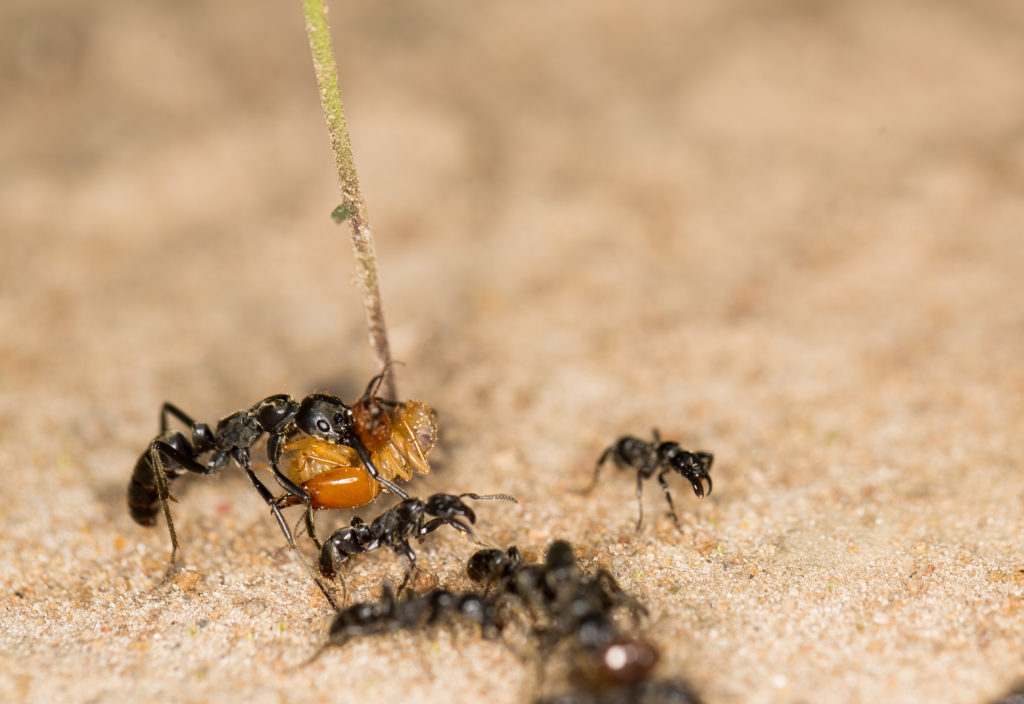
© Erik T. Frank
Their foraging phase starts with scout ants leaving the nest to search for termite foraging sites. Termites feed only on dead plant material (indirectly), so they are often found in leaf litter or dead wood. After finding a suitable site, the scout will return to the nest to recruit between 200-800 ants to follow her to this termite site in a column formation, with the scout at the front.
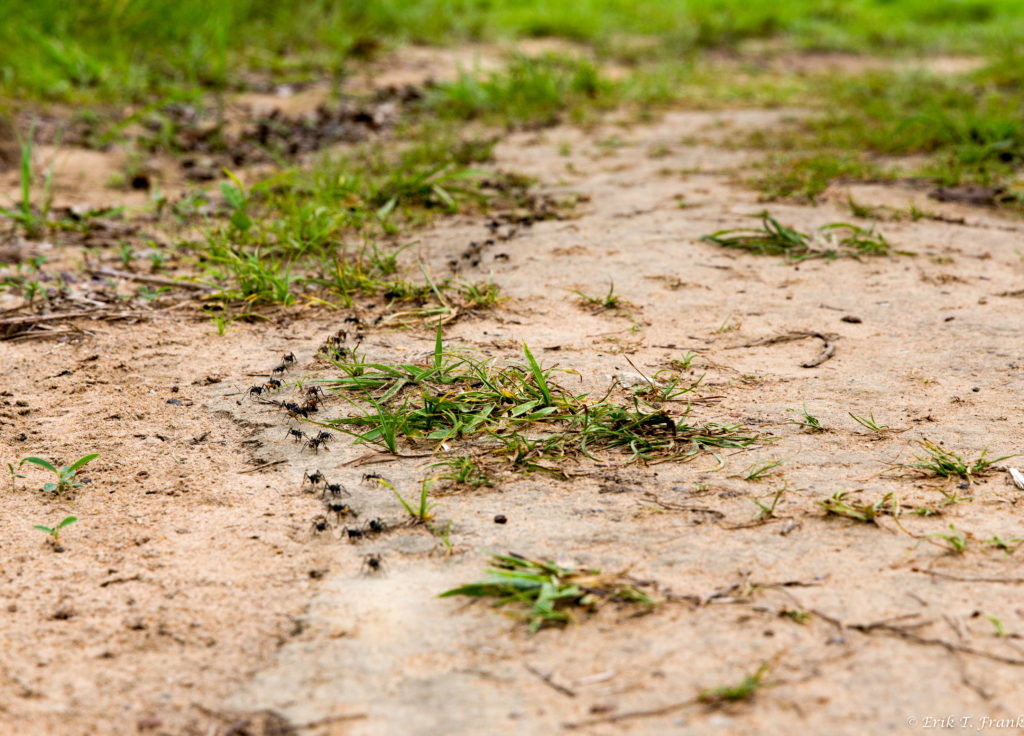
© Erik T. Frank
Once they arrive at the hunting site, they wait for all the ants to gather before overrunning the termites all together. The termites like to build a protective soil layer over their foraging sites. So the majors of M. analis first have to break open this layer before the minors can rush into the galleries to kill and carry out the termites.

© Erik T. Frank
After the hunt, which lasts between 10 and 20 minutes, the ants gather the termites in their mandibles and they prepare for the return journey, again together in their column formation.

© Erik T. Frank
These hunts are not without danger, though. The termite soldiers are able to inflict significant injuries to the ants, like biting off limbs or clinging on to the ant.

© Erik T. Frank
The ants have found an ingenious way though to deal with this increased injury risk. The injured ants “call” for help with pheromones in the mandibular gland. This attracts nestmates that then proceed to investigate the injured ant.

© Erik T. Frank
After assuring themselves that it is indeed an injured ant in need of help, the helper will pick up the injured nestmate and carry her back to the nest, within the safety of the returning group.
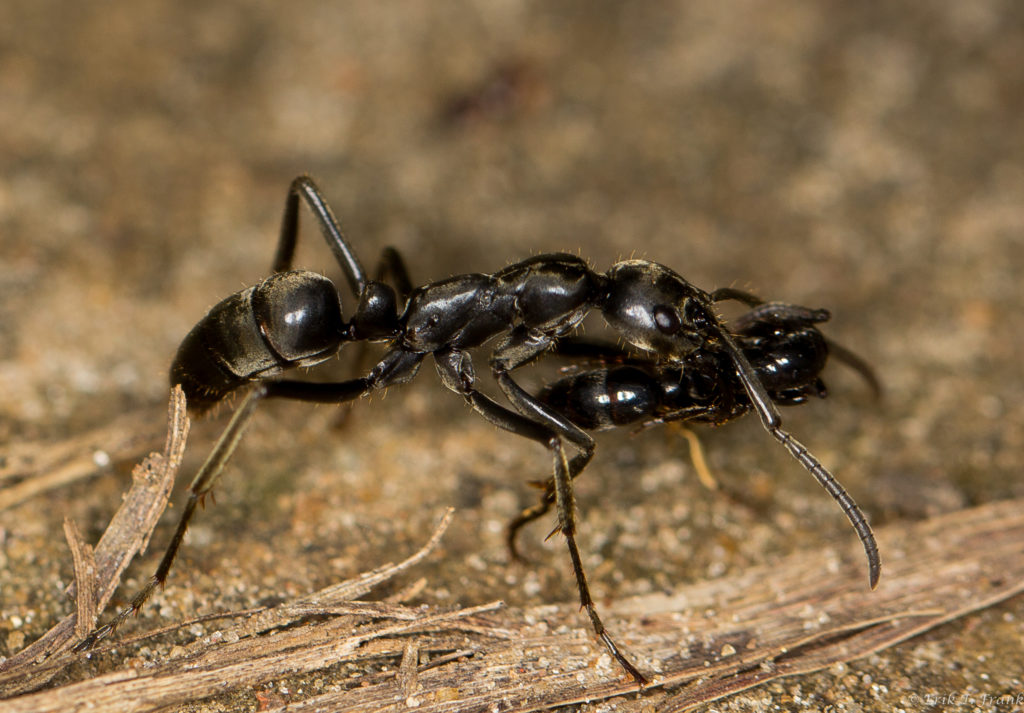
© Erik T. Frank
It’s important for the ants to return together, because it is likely to reduce the risks of being preyed on by dangerous predators. For an injured ant that risk is even greater. Being handicapped they move a lot more clumsily and can’t keep up with the group without help. These ants become easy prey for jumping spiders or other predatory insects: without help, a third of the injured ants would die during the return journey.
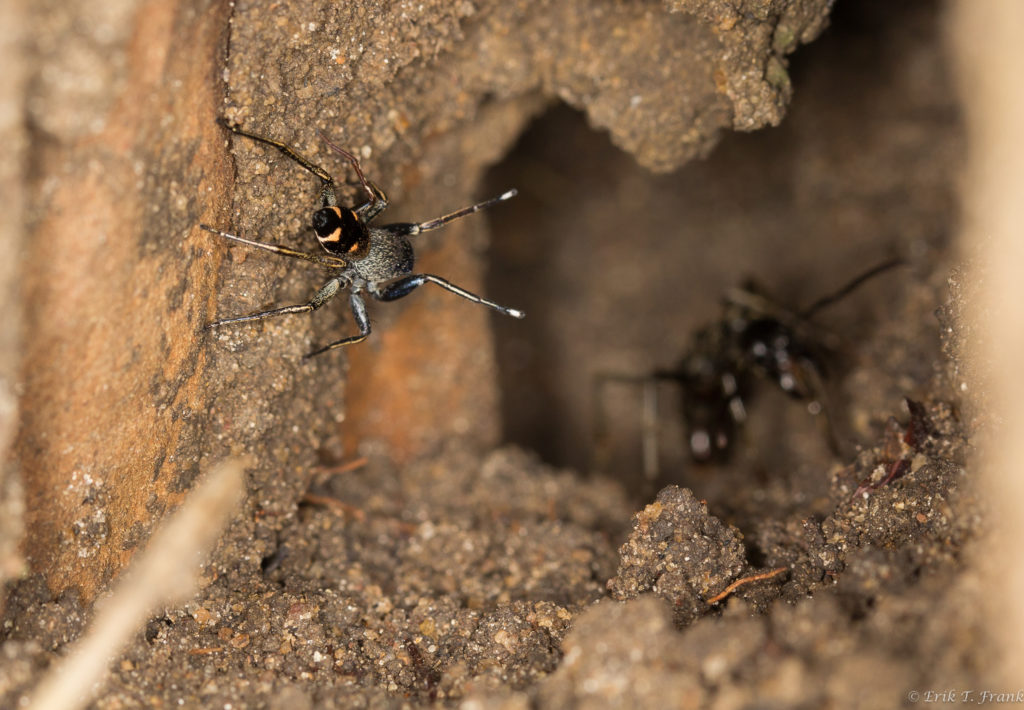
© Erik T. Frank
After conducting some more experiments, we were certain that these injured ants are able to recover from their injuries inside the safety of the nest. Less than 24 hours after injury, they are able to adapt their locomotion to a 4- or 5-legged gait and participate again in future raids. In fact, a third of the minors going out for a hunt have already lost a limb in a previous raid. So a big question that was remaining was: What goes on inside the nest? For this, we excavated a couple of colonies from the field (with the help of our local assistant David Kouame).

© Erik T. Frank
We then placed them in the research stations lab; this had the huge advantage that we could collect their natural food (termites) directly in front of our door step. We then placed them in nests that allowed us to film with an infra-red camera from above.

© Erik T. Frank
It was during these observations inside the nest that we realized that the rescue behaviour was a lot more complex than previously thought. Inside the nest the ants that had lost a limb were intensively groomed directly at the wound by their nestmates. This “treatment” would go on for several minutes and was especially pronounced within the first 30 minutes.

© Erik T. Frank
More importantly, ants that did not receive treatment (kept in isolation) died in 80% of the cases, while if we allowed only one hour of treatment inside the nest and isolated them afterwards: mortality was only 10%. In other words, this treatment with the mouthparts cleaning the injury was vital for the survival of the injured ants.
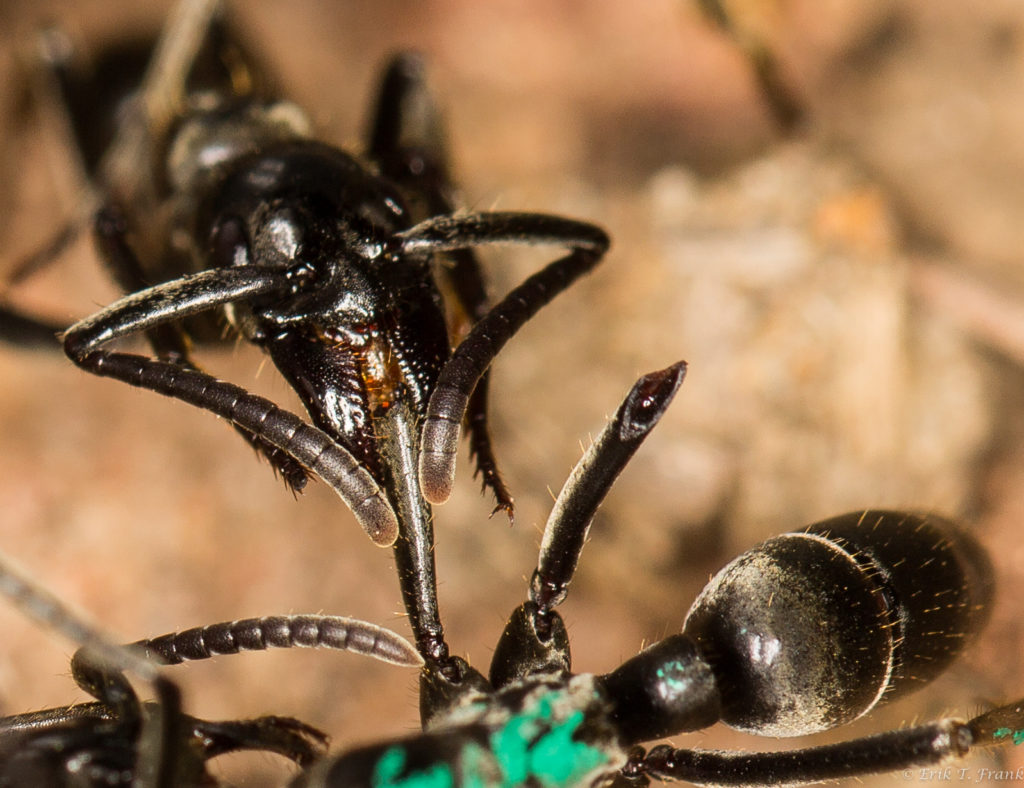
© Erik T. Frank
Ultimately, this behaviour is, in my opinion, a beautiful example for adaptations of a specialized predator on a dangerous prey and the arms race it entails. Since the termites were getting more and more capable of defending themselves against predators, the costs for M. analis to hunt them kept increasing. One way to reduce these increased foraging costs is by saving the injured nestmates and helping them recover for future fights.

© Erik T. Frank
There are still many questions left to answer on how the treatment exactly works. Is it purely prophylactic? Or do they apply antibiotics on the wound? And has a behaviour like this evolved also in other ant species? These are all questions I hope to answer in the following years here at the University of Lausanne together with Prof. Laurent Keller.



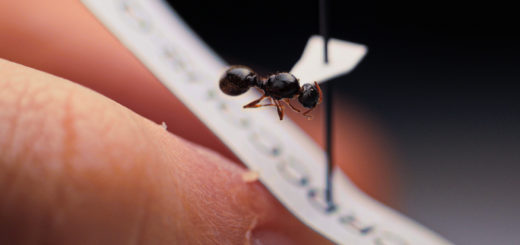
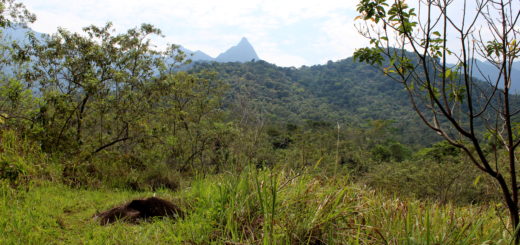
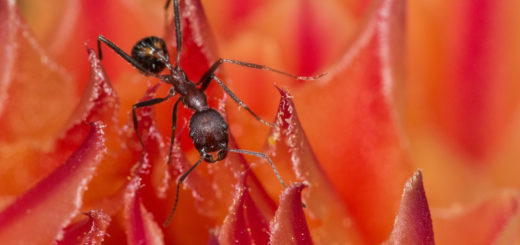
Cool system!!! Beautifull pictures, thanks for sharing.